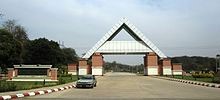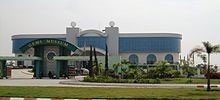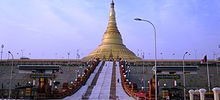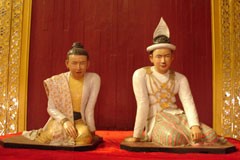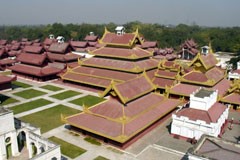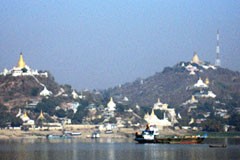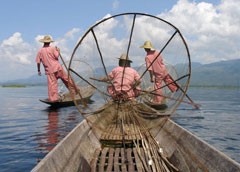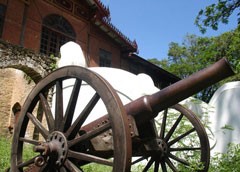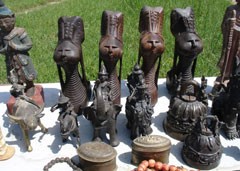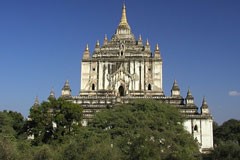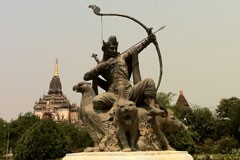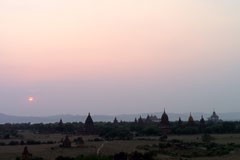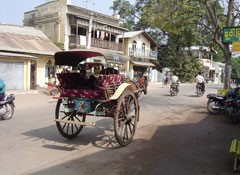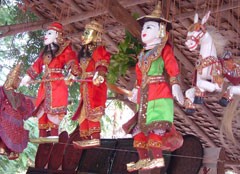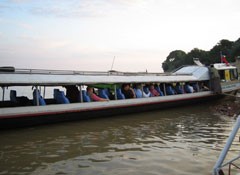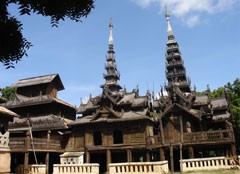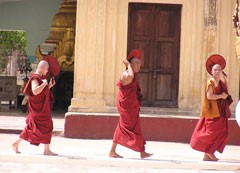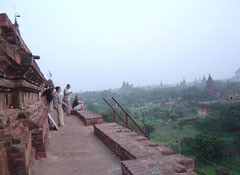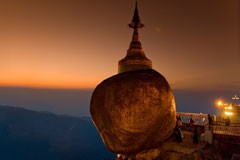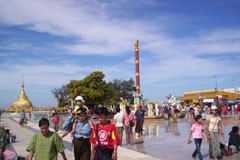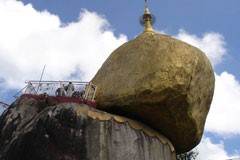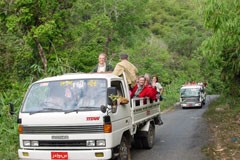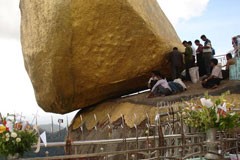Mandalay
Mandalay: center for the culture of Myanmar and last capital of myanmar kingdom was Mandalay. About 300 Monasteries in and round the city means Mandalay was also the center for Buddhism. King Mindon founded Mandalay at the foot of Mandalay Hill according to the cosmology. The golden palace and moat can be see till nowadays but some are rebuilt. The Kuthodaw,”the largest book of the world”, was the pagoda complex, in which 729 marble slabs are hoisted. Mingun, the temporary palace of King from the western side of Ayeyarwaddy River was famous for the unfinished Pagoda and 90 tons weight Bell. In Amarapura, the 1.2 km long wooden bridge.
Etymology
The city gets its name from the nearby Mandalay Hill. The name is likely a derivative of a Pali word although the exact word of origin remains unclear. The root word has been speculated as: "Mandala" (meaning, circular plains), "Mandare" (believed to mean "auspicious land"), or "Mandara" (a mountain from Hindu mythology).
When it was founded in 1857, the royal city was officially named Yadanabon , the Burmese version of its Pali name *Ratanapura* which means "The City of Gems". It was also called Lay Kyun Aung Myei; Victorious Land over the Four Islands and the royal palace, Mya Nan San Kyaw ; Famed Royal Emerald Palace.
Early history
Like most former (and present) capitals of Burma, Mandalay was founded on the wishes of the ruler of the day. On 13 February 1857, King Mindon founded a new royal capital at the foot of Mandalay Hill , ostensibly to fullfill a prophecy on the founding of a metropolis of Buddhism in that exact place on the occasion of the 2,400th jubilee of Buddhism.
Geography
Mandalay is located in the central dry zone of Burma by the Irrawaddy river at 21.98° North, 96.08° East, 64 metres (210 feet) above sea level. Its standard time zone is UTC/GMT +6:30 hours.
Around the city
Mandalay Hill : The hill has for long been a holy mount. Legend has it that the Buddha, on his visit, had prophesied that a great city would be founded at its foot. Mandalay Hill, 230 metres in elevation, commands a magnificent view of the city and surrounding countryside. The construction of a motor road to reach the hill-top has already been finished.
Mandalay Palace : The whole magnificent palace complex was destroyed by a fire during World War II. However, the finely built palace walls, the city gates with their crowning wooden pavilions and the surrounding moat still represent an impressive scene of the Mandalay Palace, "Mya-nan-san-kyaw Shwenandaw", which has been rebuilt using forced labour. A model of the Mandalay Palace, Nanmyint-saung and Cultural Museum are located inside the Palace grounds.
Shwenandaw Monastery : Famous for its intricate wood-carvings, this monastery is a fragile reminder of the old Mandalay Palace. Actually, it was a part of the old palace later moved to its current site by King Thibaw in 1880.
Maha Muni Pagoda : The Image is said to have been cast in the life-time of the Gautama Buddha and that the Buddha embraced it 7 times thereby bringing it to life. Consequently, devout Buddhists hold it to be alive and refer to it as the Maha Muni Sacred Living Image. Revered as the holiest pagoda in Mandalay, It was built by King Bodawpaya in 1784. The image in a sitting posture is 12 feet and 7 inches (3.8 m) high. As the image was brought from Rakhine State it was also called the Great Rakhine Buddha. The early morning ritual of washing the Face of Buddha Image draws a large crowd of devotees everyday. The Great Image is also considered as the greatest, next to the Shwedagon Pagoda , in Burma. A visit to Mandalay is incomplete without a visit to Maha Muni Pagoda.
Kuthodaw Pagoda (The World's Biggest Book): Built by King Mindon in 1857, this pagoda modeled on the Shwezigon Pagoda at Nyaung U, is surrounded by 729 upright stone slabs on which are inscribed the entire Buddhist Scriptures as edited and approved by the Fifth Buddhist Synod . It is popularly known as "the World Biggest Book".
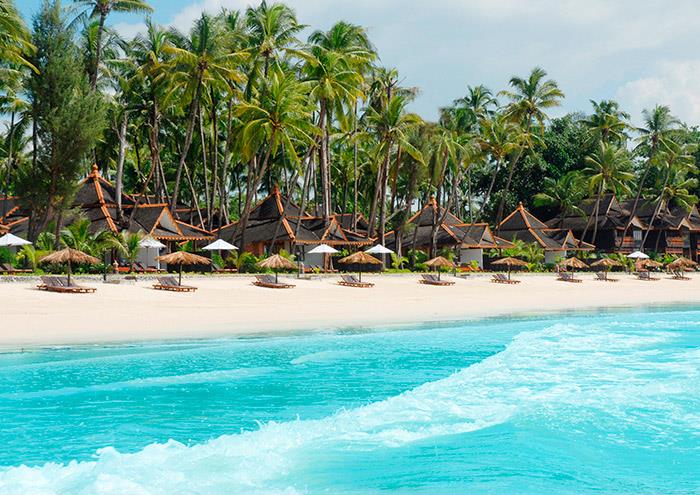 Your physical and mental recovery and for memorable leisure, please spent your time at Ngapali beach. The Ngapali beach was the best in Myanmar, where you can enjoy 3S (sea, sand and sun). The private Bungalows, beautiful beach with white sand under sun shine can bring your enjoyable moments in Myanmar.
Your physical and mental recovery and for memorable leisure, please spent your time at Ngapali beach. The Ngapali beach was the best in Myanmar, where you can enjoy 3S (sea, sand and sun). The private Bungalows, beautiful beach with white sand under sun shine can bring your enjoyable moments in Myanmar. 

